Embracing Sales Tech: Revolutionizing Your Sales Process
Casey O'Connor
Over the past several decades, technology in sales has gone from a luxury to a non-negotiable, and its prevalence continues to grow exponentially; a 2020 State of Sales report saw a 56% increase in investment in sales tech.
That rise has undoubtedly grown even more dramatically post-pandemic.
Any sales team that wants to remain competitive, meet digital-savvy buyers’ needs, and reliably scale their success needs to be prepared to implement at least a basic tech stack in their sales process.
Fortunately, there are virtually limitless options to explore when it comes to sales technology. There are platforms, tools, and features that can excel at just about every sales task a team could ever need to complete, from cold call dialing to high-level strategizing.
In this article, we’ll go over some of the most popular types of sales tech available to sales and marketing (and why it’s so important to have a well-defined tech stack), as well as a few noteworthy examples of each type of software.
Here’s what we’ll cover:
- What Is Sales Tech?
- Benefits of Sales Tech
- CRM Systems
- CRM Data Enrichment
- Sales Operations Software
- Sales Training Software
- Sales Enablement Software
What Is Sales Tech?
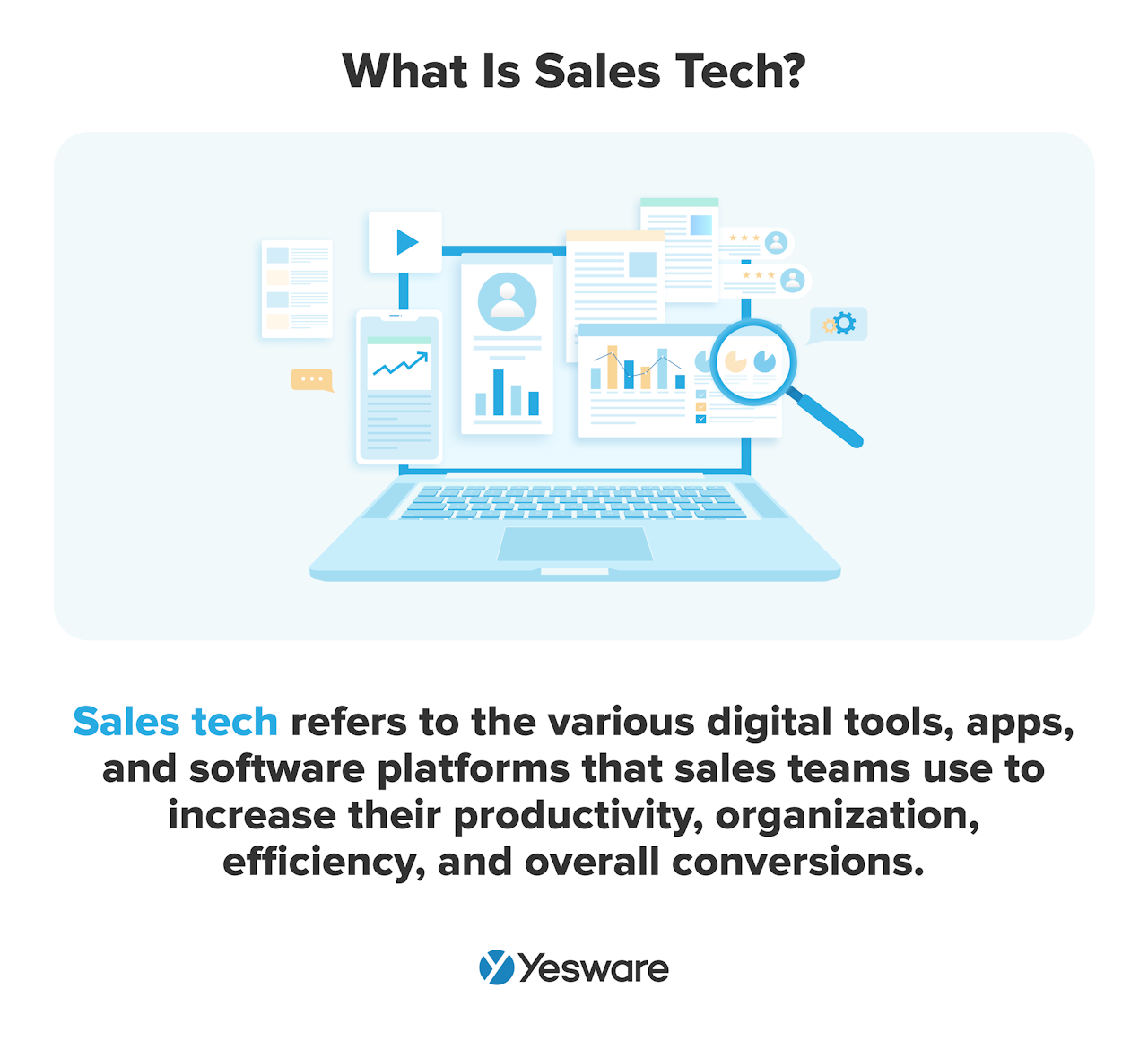 Sales tech (short for sales technology, of course) is a term that represents the various digital tools, apps, and software platforms that sales teams use to increase their productivity, organization, efficiency, and overall conversions.
Sales tech (short for sales technology, of course) is a term that represents the various digital tools, apps, and software platforms that sales teams use to increase their productivity, organization, efficiency, and overall conversions.
The number of sales tech platforms available to teams is remarkably vast and continues to grow every day.
Sales teams can find a feature, tool, or platform to improve just about any need, task, or challenge within the sales process, from lead generation to buyer relationships to scheduling meetings to analyzing data.
It’s worth noting here that some of the more recent platforms to emerge in the sales tech market also offer artificial intelligence (sales AI) capabilities. 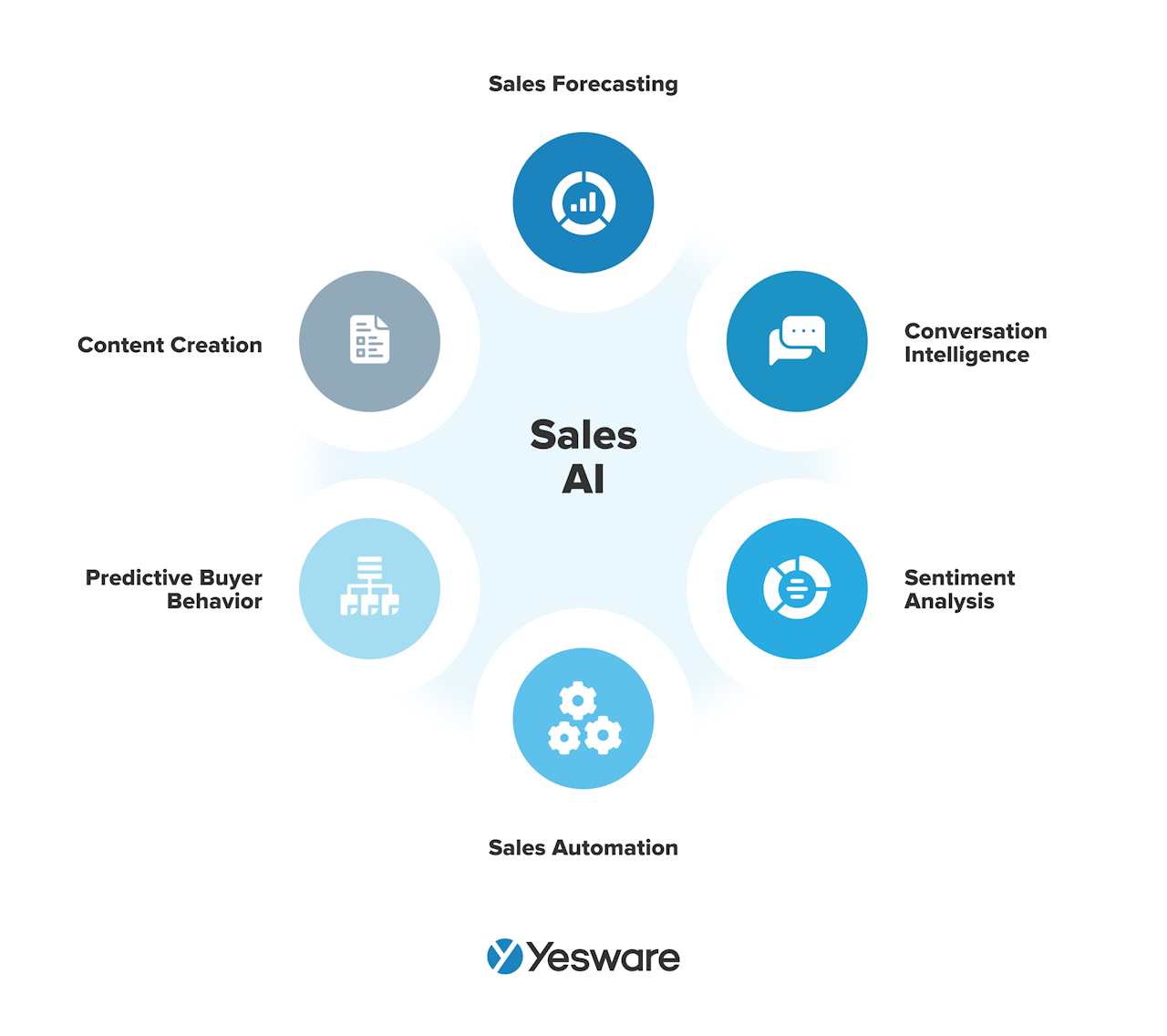 While these terms are sometimes conflated, they aren’t quite the same; AI is actually a subset (and sometimes a feature) of sales tech in general.
While these terms are sometimes conflated, they aren’t quite the same; AI is actually a subset (and sometimes a feature) of sales tech in general.
Benefits of Sales Tech
When sales and marketing teams choose and implement sales tech to meet their needs, it has the potential to improve literally every part of the sales process.
There are sales tools that work with granular-level data analysis and those that help with big-picture forecasting.
There are platforms to assist internal operations, as well as options to improve your customer-facing interactions.
When it comes to sales tech, there is truly no limit to the number of processes you can automate, simplify, or improve.
Sales teams that learn to leverage the right tools for their organization enjoy a number of benefits. 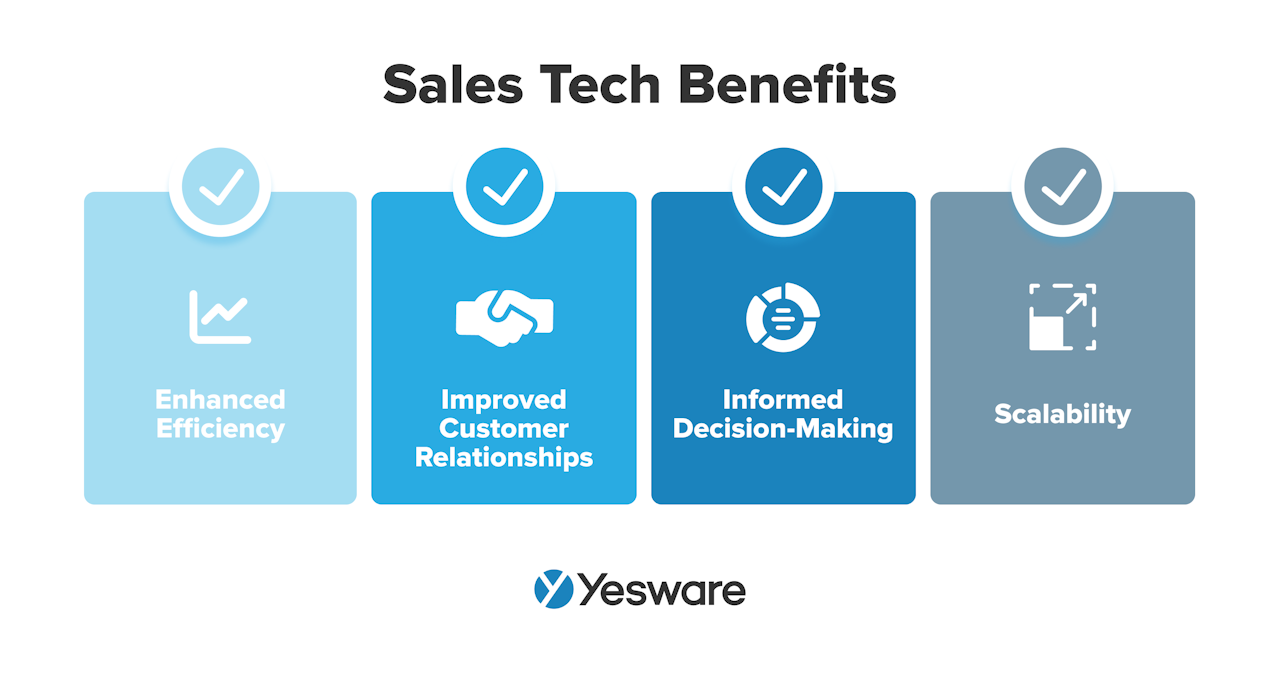
Enhanced Efficiency and Productivity
Sales reps today are busier than ever before, but are still only managing to allocate about one-third of their time toward revenue-generating sales tasks.
Frustratingly, much of the other two-thirds of that time is spent on busy work and administrative tasks like data entry, pipeline management, prospect research, and data analysis.
All of these activities (and then some) can be automated, streamlined, and optimized with the help of specific sales tech. When sales reps can free up more time, they can connect with more prospects and close more deals.
Improved Customer Relationships
Speaking of prospects, sales tech can also give teams a lot of leverage when it comes to building deeper, more trusting, and more mutually valuable relationships with B2B buyers.
Many sales tech tools are designed with the specific purpose of helping sales reps discover more (and harder-to-find) details about their leads and prospects.
This kind of sales tech is often referred to as sales intelligence software, and is another type of tool that can save sales reps valuable time and energy that can be otherwise spent making real connections.
Sales tech can also remove friction for buyers throughout the process with tools like e-signature platforms and meeting schedulers. These tools improve metrics like speed-to-lead, conversion rates, and sales cycle lengths.
Informed Data-Driven Decisions
As amazing as sales tech can be, there’s no need to worry — sales will always be a human-led profession.
That being said, one of the things that sets sales tech apart from human capabilities is its immense power to collect, store, and analyze massive amounts of data around the sales process.
The importance of comprehensive sales data cannot be understated.
A reliable database helps sales teams make stronger and sounder decisions about everything in the sales process, from individual buyer interactions to big-picture strategic planning.
Accurate, timely, and thorough sales data helps teams collaborate more effectively and execute data-driven decisions with confidence.
Scalability
Sales tech helps give teams the digital support they need to:
- Identify patterns among their most successful customers, and use them to target new leads
- Consistently reach prospects with the right content at the right time
- Follow-up strategically
- Close deals with a highly targeted approach
In other words, sales tech makes it easy to grow your sales pipeline and scale your success.
The right platforms also help teams collect data about what’s working so they can replicate their successes and identify problem areas so they can troubleshoot their challenges with data-driven insights.
CRM Systems
Every sales team, regardless of its size or market, needs a capable customer relationship management (CRM) system.
A CRM system is a type of technology that helps sales teams manage their contact data, details about previous interactions, engagement rates, and more.
CRM platforms can also help sales and marketing teams reach their prospects and buyers more effectively. 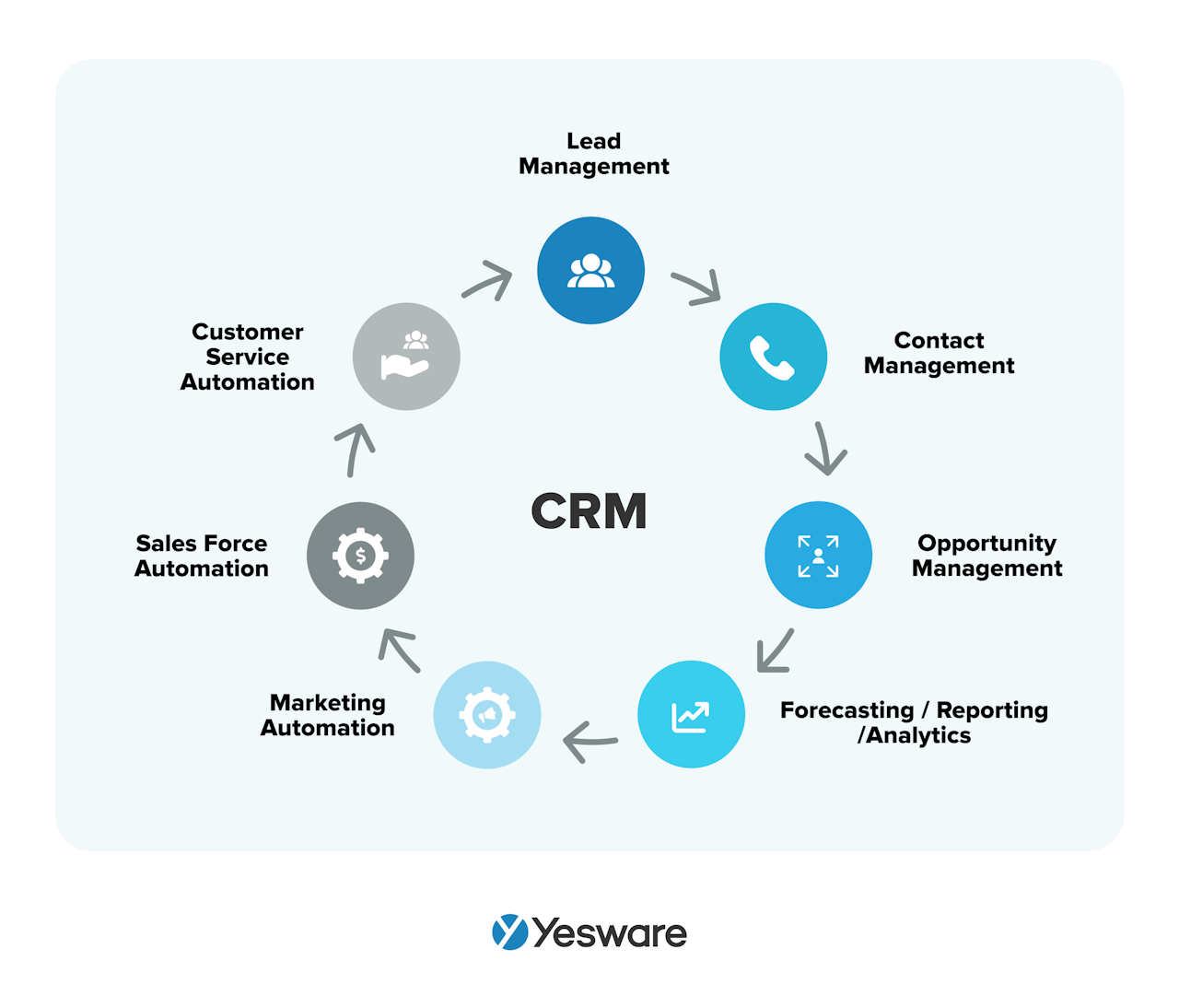 CRM systems offer a wide variety of features and capabilities, ranging from quite basic to impressively sophisticated. When choosing a CRM platform, look for a product that improves the following aspects of your sales process:
CRM systems offer a wide variety of features and capabilities, ranging from quite basic to impressively sophisticated. When choosing a CRM platform, look for a product that improves the following aspects of your sales process:
Automation
First and foremost, make sure that any CRM system you choose can automate the processes that are the most time-consuming and tedious for your team. Aside from the upfront setup, your CRM platform should take work off of sales reps’ plate, not add more to it.
Collaboration
Your CRM should also help your sales, marketing, and customer success teams communicate and collaborate more effectively. One of the major benefits of a CRM system is that it streamlines all of your team’s data in one central hub that everyone can access.
Intelligence
In order to remain competitive, it’s a good idea to look for CRM solutions that offer data enrichment and potentially even AI capabilities. While CRM platforms have always been responsible for storing data, the best ones today also perform routine data hygiene and enrichment.
Integration
For most sales teams, the CRM is one of the first tools they add to their tech stack. That being said, it’s important to choose a platform that will easily integrate with any of your existing solutions or any you plan to implement in the future.
Accessibility
In the post-pandemic world, it’s not uncommon for teams to connect to buyers (and one another) from virtually anywhere in the world. To that end, look for a CRM that allows your team members to access the platform from anywhere. Most teams choose a cloud-based platform for this reason.
Customization
While some base-level CRM systems are plug-and-play, the more sophisticated ones offer impressive customization capabilities that allow teams to build a personalized system that meets all of their unique needs. While the most complex of these platforms likely aren’t necessary for SMBs, it’s still a good idea to look for a CRM that offers flexibility and at least some level of customization that can grow with your team.
The CRM platform is the backbone of your sales tech stack. It houses everything your team needs to know about prospects or customers—interactions, purchases, quotes, sales invoices, calls, emails, internal notes, and more. The rest of your tech stack will be built around this platform, so it’s important to choose wisely.
CRM System Examples
Here are two of the most popular CRM systems.
Salesforce
Salesforce is perhaps the most well-known enterprise-level CRM system. It offers tremendous capability when it comes to customizations, but with that often comes some challenges with setup and implementation. Still, once users get over the initial learning curve, most report being widely impressed by the platform’s abilities and features.
Hubspot
Hubspot is known for being a user-friendly yet powerful CRM system that integrates with many of Hubspot’s other sales and marketing tools and apps. It’s intuitive and offers a decent level of customization.
CRM Data Enrichment
Some sales teams choose to supplement their CRM systems with a dedicated CRM data enrichment platform. 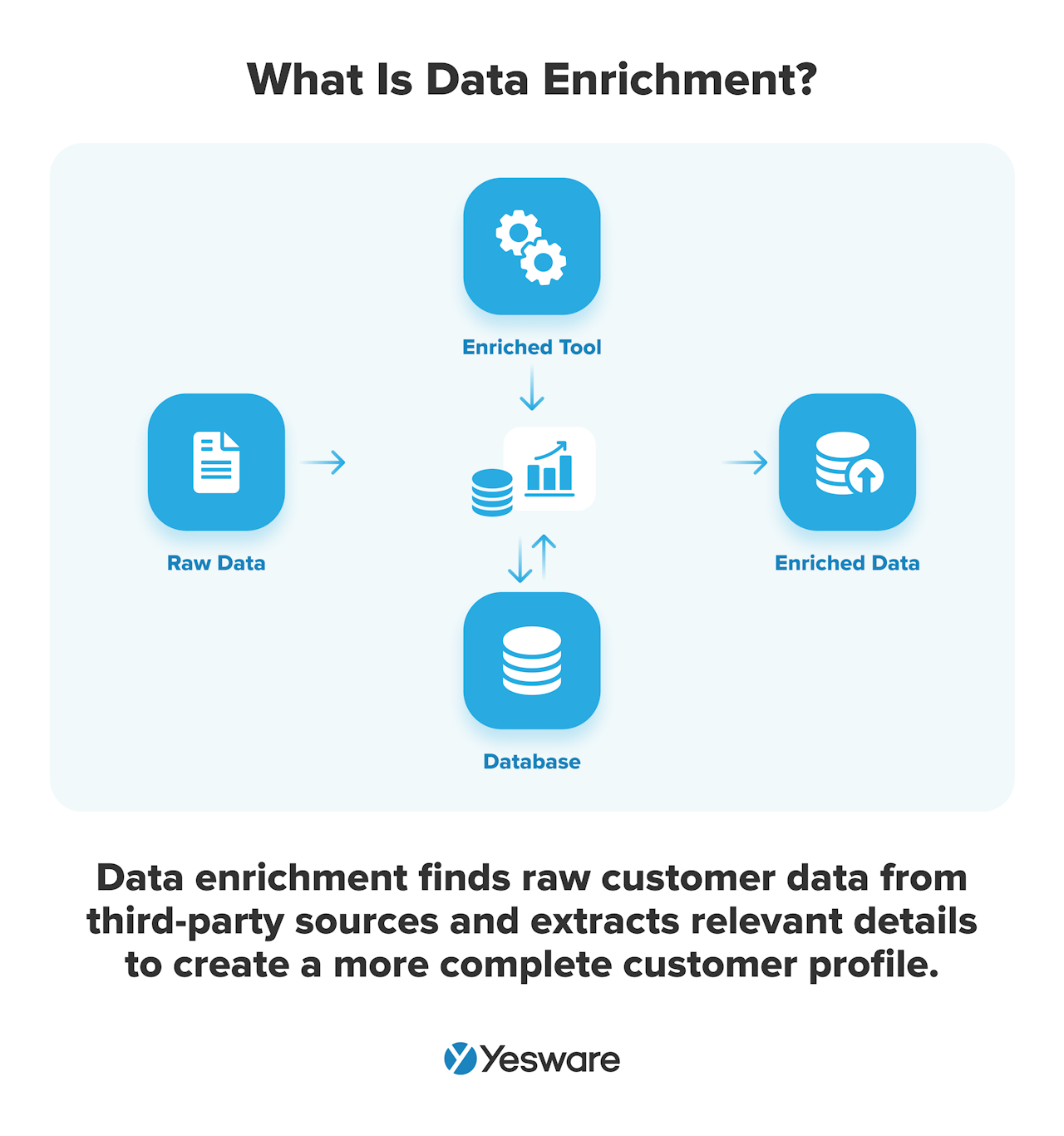 These tech tools are designed to add additional and harder-to-source details about prospects and customers by crawling the web for data.
These tech tools are designed to add additional and harder-to-source details about prospects and customers by crawling the web for data.
CRM enrichment tools can help teams supplement their existing CRM data with details like:
- Phone number
- Email address
- Company information, including financials like revenue and funding history
- Location information
- Purchase history
- Technology use and preferences
- Prior interactions with your brand or competitors
Many of these platforms also offer built-in data hygiene features. 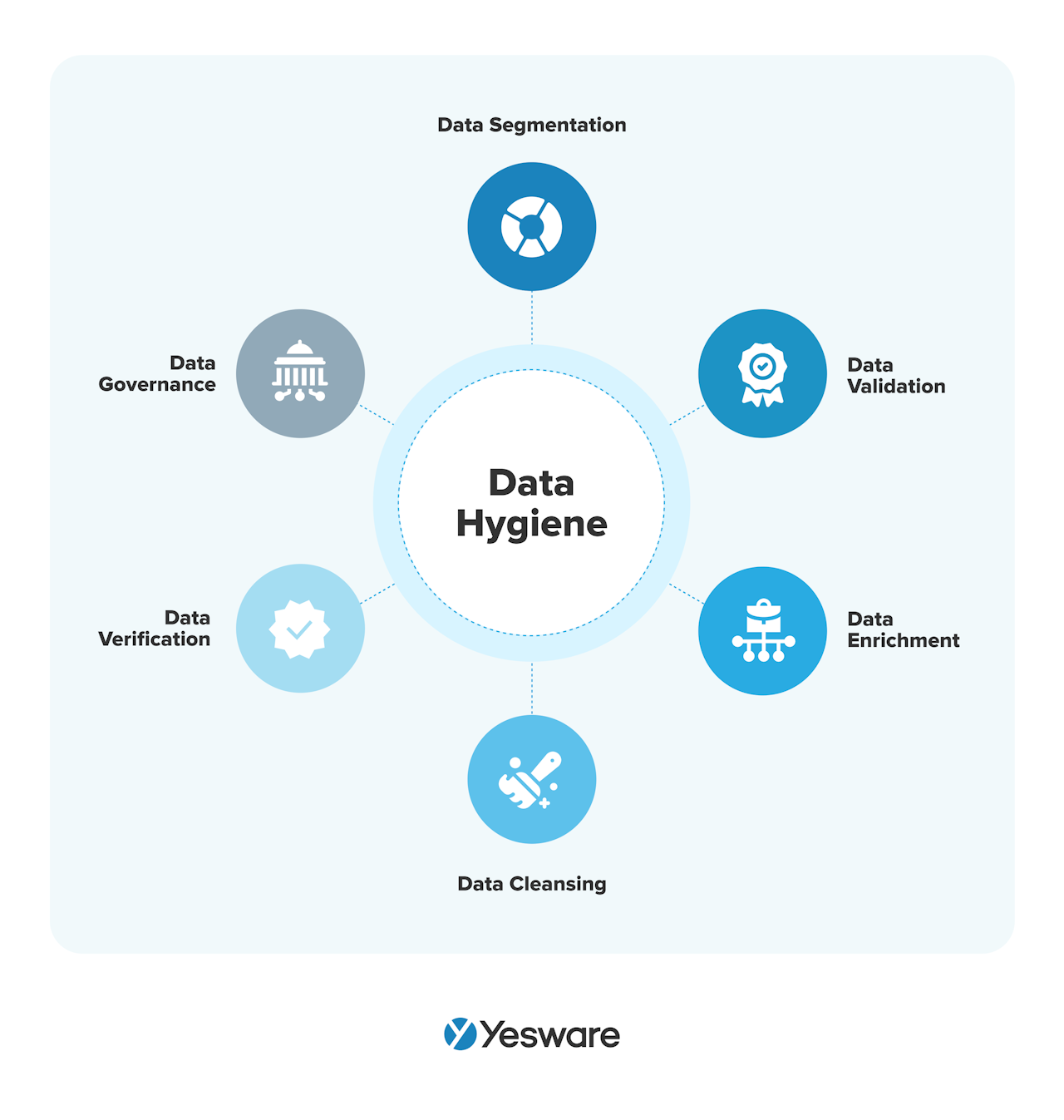 Bad data is extremely costly for companies, costing them over $3 trillion annually — not to mention the lost time, effort, reputation, and morale. A CRM data enrichment platform can help ensure that sales and marketing teams are working with the most optimized dataset possible.
Bad data is extremely costly for companies, costing them over $3 trillion annually — not to mention the lost time, effort, reputation, and morale. A CRM data enrichment platform can help ensure that sales and marketing teams are working with the most optimized dataset possible.
CRM data enrichment can also help sales teams take a proactive lead generation approach by crawling the web and identifying leads that match your ideal customer profile (ICP sales) and then adding them to your CRM database. 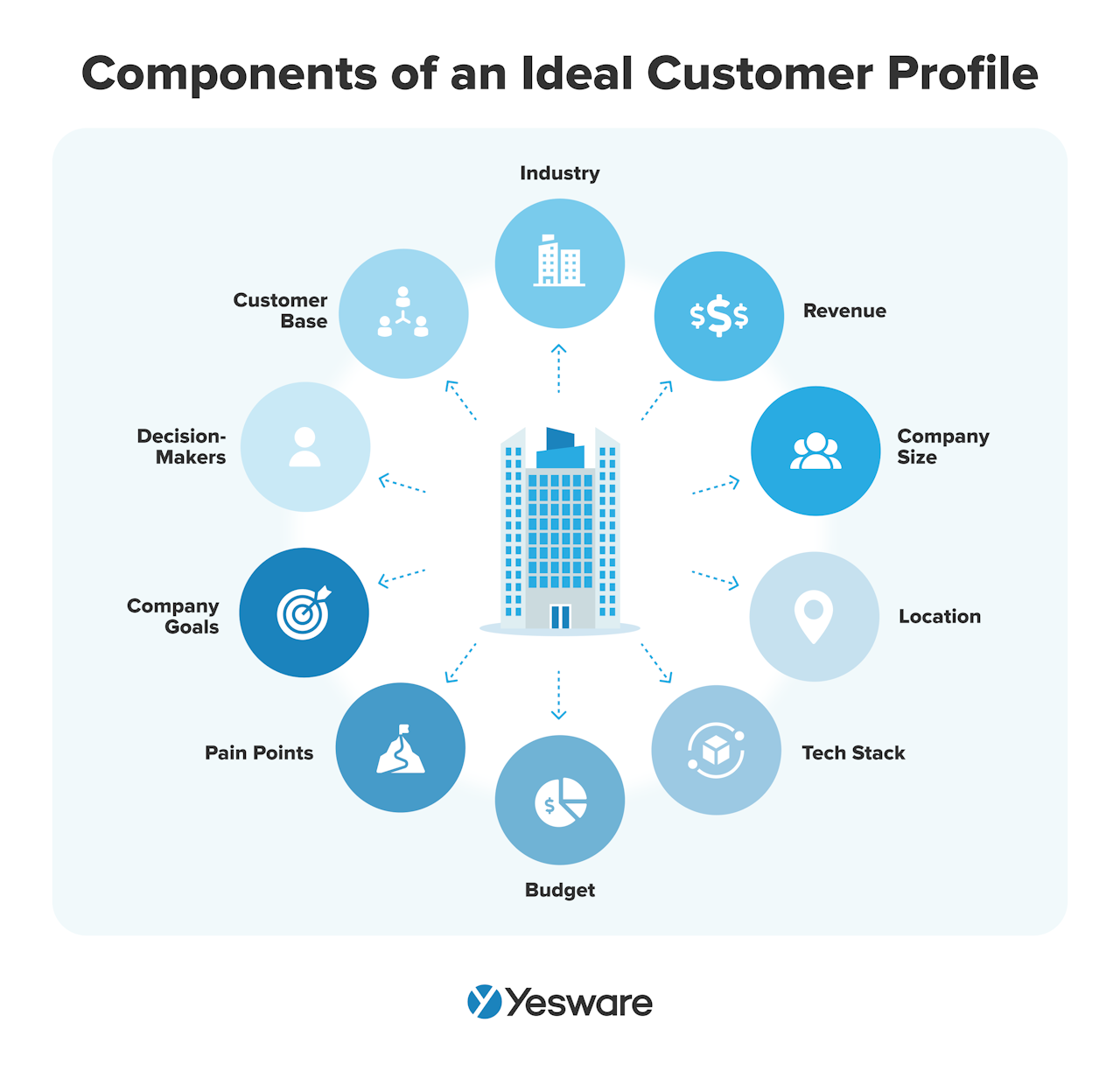 While some CRM platforms offer built-in data enrichment features, many sales teams opt to add the additional features offered by these specialized sales tech tools to enhance the data enrichment process.
While some CRM platforms offer built-in data enrichment features, many sales teams opt to add the additional features offered by these specialized sales tech tools to enhance the data enrichment process.
CRM Data Enrichment Examples
Here are two of the leading CRM data enrichment platforms.
Clearbit
Clearbit is a widely popular data enrichment tool that integrates well with several other platforms and apps, including Salesforce, GSuite, Outlook, Hubspot, Marketo, Zapier, and more.
LeadGenius
LeadGenius is a lesser-known platform, but users are consistently impressed by its quality and breadth of data, as well as its AI and machine learning features.
Sales Operations Software
Sales operations software supports sales reps in all of the top-level, non-selling tasks they need to complete to keep the sales process and buyer interactions running smoothly.
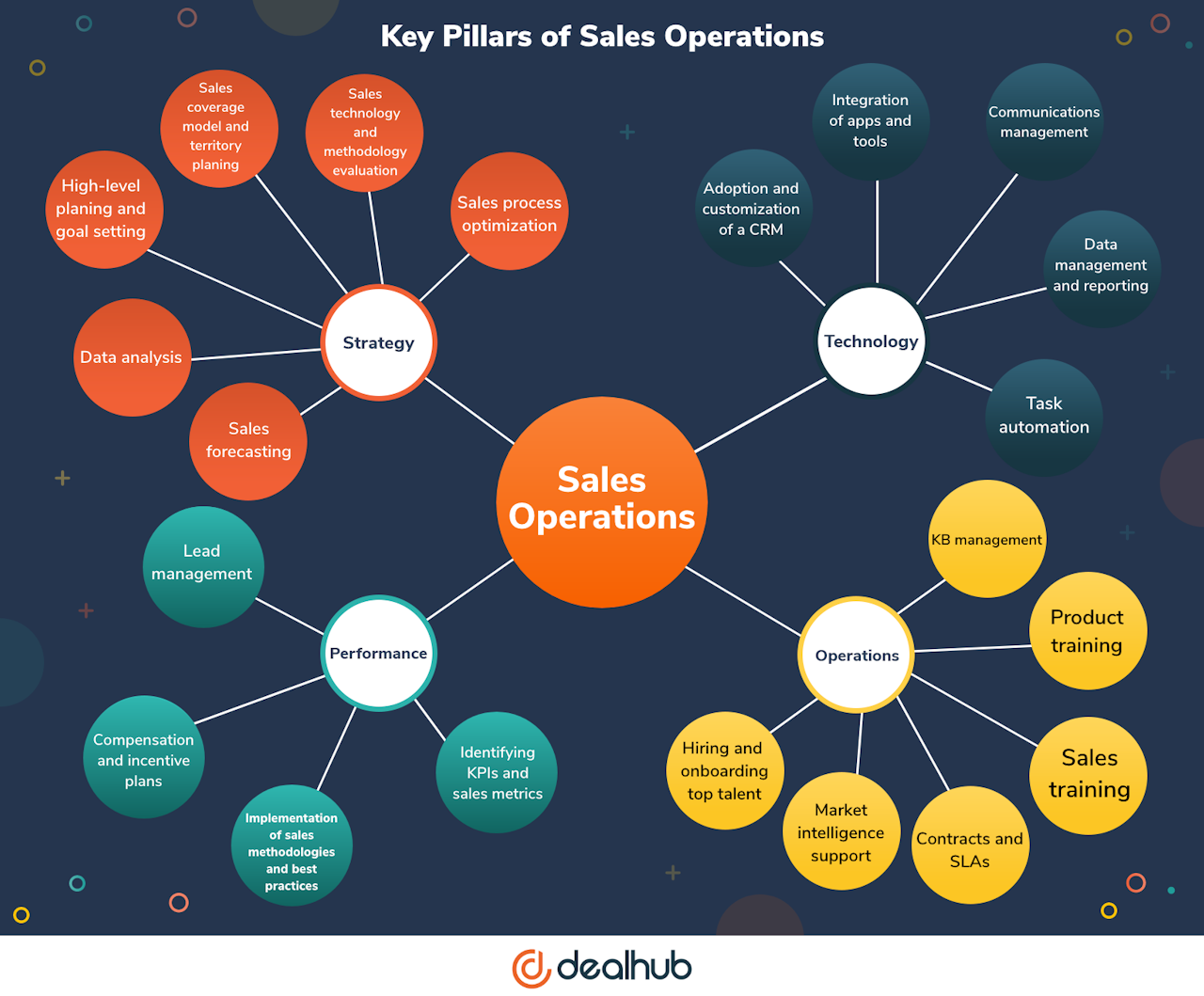
Some sales teams have full teams dedicated to sales operations, but the truth is that today’s sales technology can handle many sales ops tasks much more efficiently and intuitively than humans can.
(Of course, for the best sales ops performance, sales teams should combine the power of a sales ops team and software.)
It’s important to note that while sales operations software seems similar to a CRM at first glance, the two types of software actually assist teams with different processes.
A CRM system focuses heavily on customer details and individual-level data, while sales ops is more about big-picture, tactical information and analysis that keeps the pipeline moving and growing.
Sales Operations Software Examples
Here are two examples of the leading sales ops software platforms.
Spotio
Spotio is a great sales op platform for field sales teams. It tracks your team’s activities and interactions with incredible precision, which are then analyzed to generate insights about lead generation and prospect outreach.
Clari
Clari is a fully customizable platform that simplifies pipeline analysis and sales forecasting. It gives teams complete visibility into their sales operation and (according to the brand itself) generates an ROI of over 440%. The software also includes an AI feature that helps reps prioritize leads.
Sales Training Software
Top-performing sales teams largely report that their sales training is highly effective for their needs.
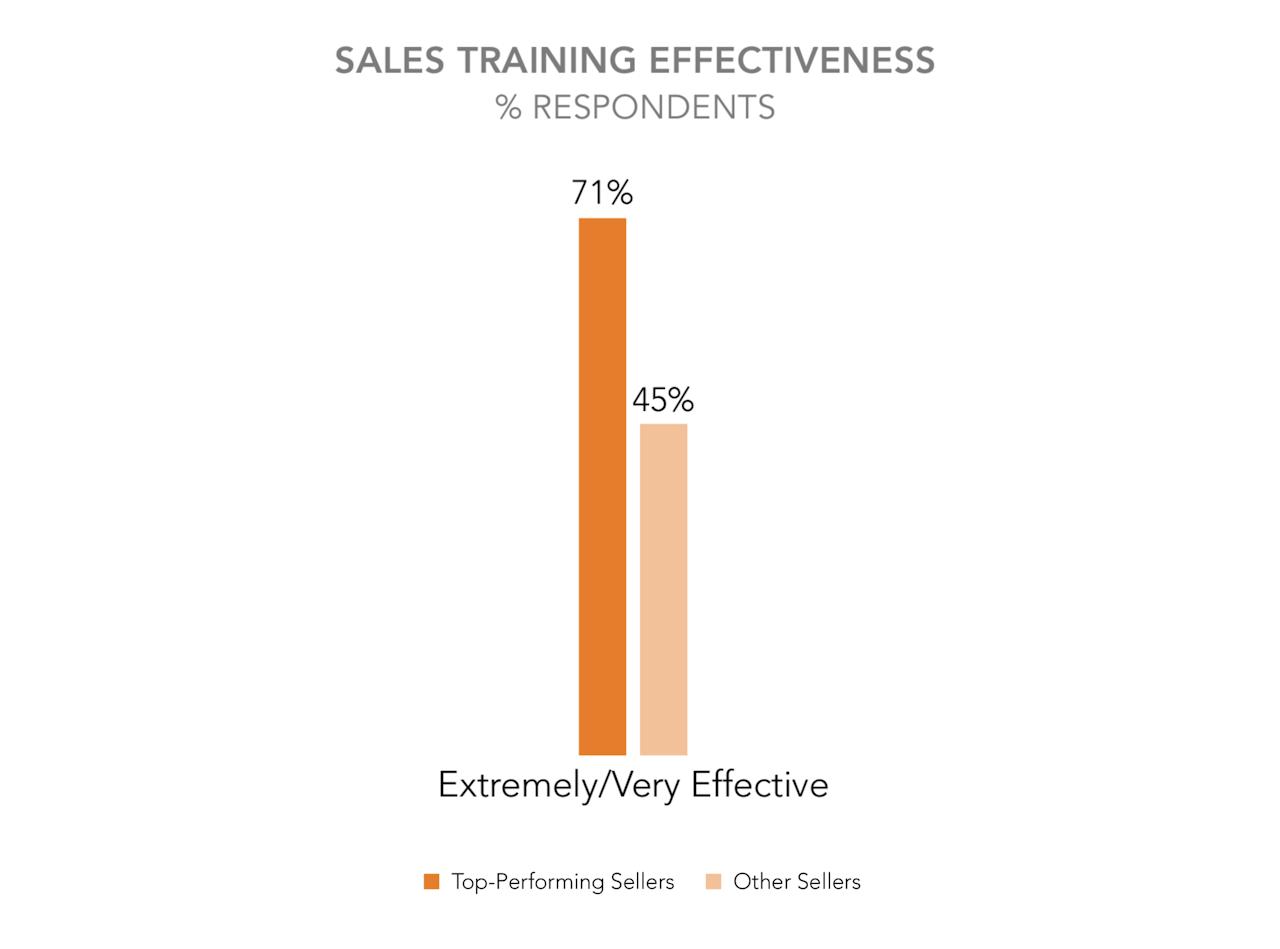
On the other hand, though, reports also show that nearly 90% of what sales reps learn at seminars and workshops is forgotten in three months.
There’s a clear discrepancy between mediocre and even average training, and the kind that helps top-performing reps maximize their success.
Sales teams that want to remain competitive and develop top-performing teams need to find ways to implement sales training in a way that’s meaningful because the benefits are worth it. 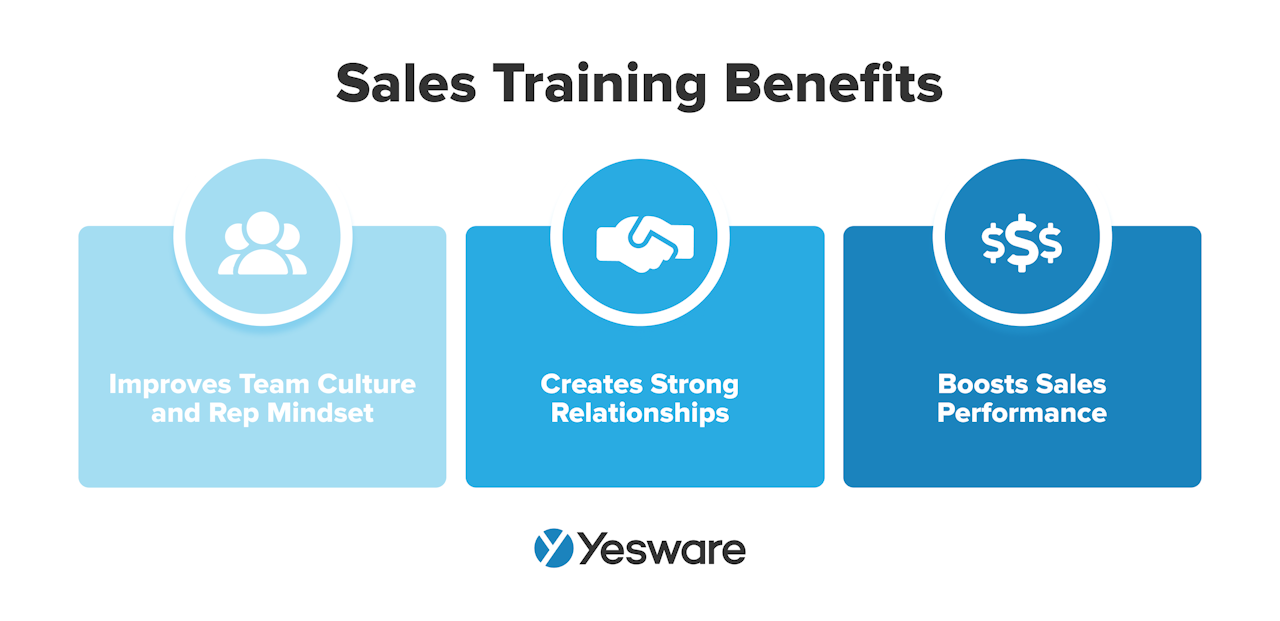 Sales teams that learn how to leverage technology the right ways can bring their training to the next level.
Sales teams that learn how to leverage technology the right ways can bring their training to the next level.
When choosing a sales training software, keep the following criteria in mind:
- Objectives: What do you hope to achieve with your sales training? What do you want your team to get out of the program? Be as specific as possible here, using the SMART goal framework to guide the process.
- Interactive: Look for sales training software that encourages your team to learn and apply new skills in real sales scenarios, and then (ideally) report back for moderator or peer feedback.
- Ongoing Support: Online training programs can feel even less personal than in-person workshops; look for platforms that work to mitigate this by offering plenty of interaction with and/or feedback from their training staff. The moderators should be as available via the software as they would be during and after a live session.
The right sales training program(s) for your team will likely evolve over time, but the important thing is to ensure it’s consistent, highly targeted, and motivating.
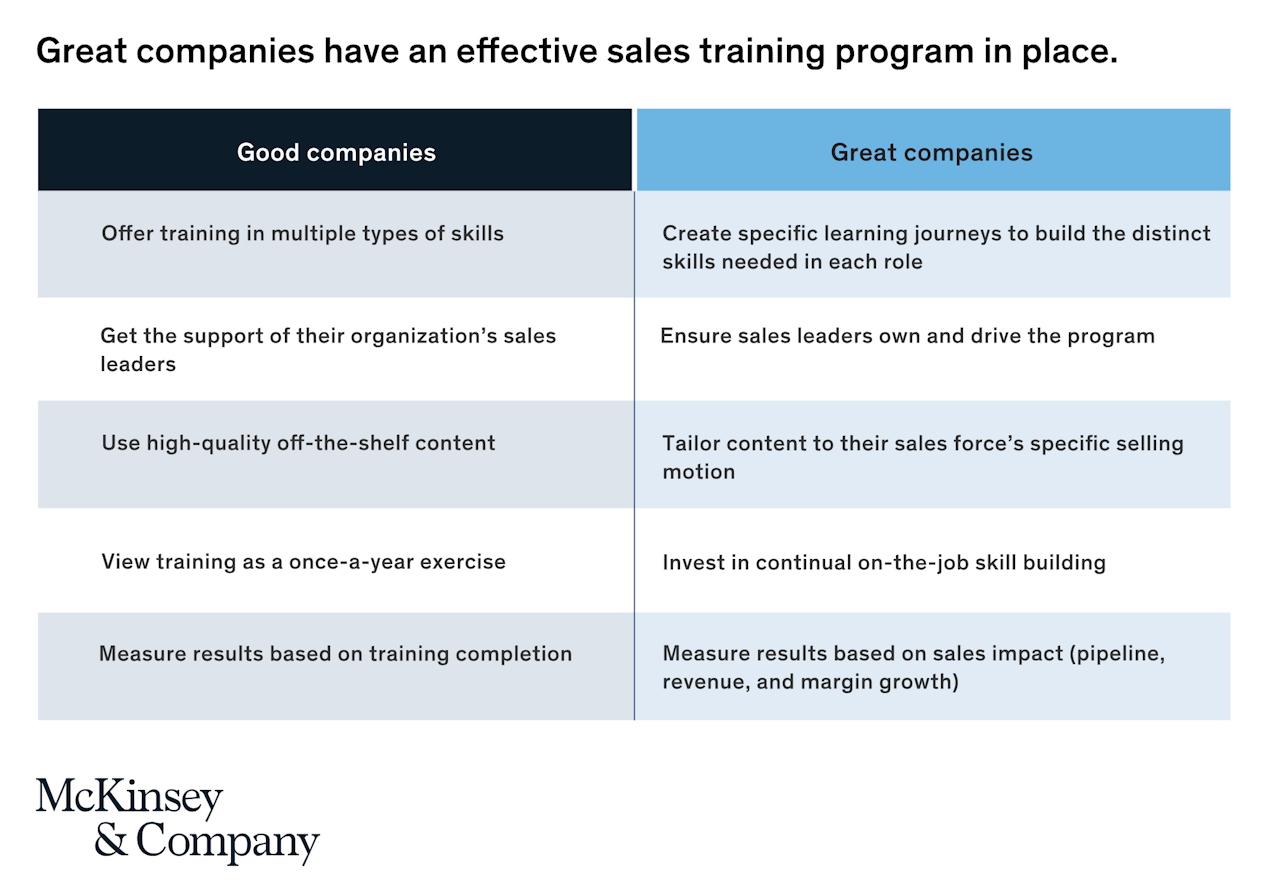
For even more dramatic results, consider implementing a sales coaching program alongside your sales training software (according to HBR, coaching can improve a team’s overall performance by nearly 20%).
Sales Training Software Examples
Here are two of the most popular sales training programs to consider for your team.
Virtual Selling Skills | Aslan
Aslan is one of the top names in sales training, and their Virtual Selling Skills course is good evidence as to how they earned that reputation. VSS is delivered in-person and online, with virtual attendees receiving live access to the same training and staff as any in-person attendee would.
IMPACT-U | The Brooks Group
For a really fun training experience, consider IMPACT-U from the Brooks Group. This training is gamified around a six-step, proven process that’s guaranteed to generate results for your sales team.
Sales Enablement Software
Sales enablement is an umbrella term that encompasses a variety of sales processes, content, tasks, and responsibilities. The main goal of sales enablement is to enhance relationships between buyers and sellers. 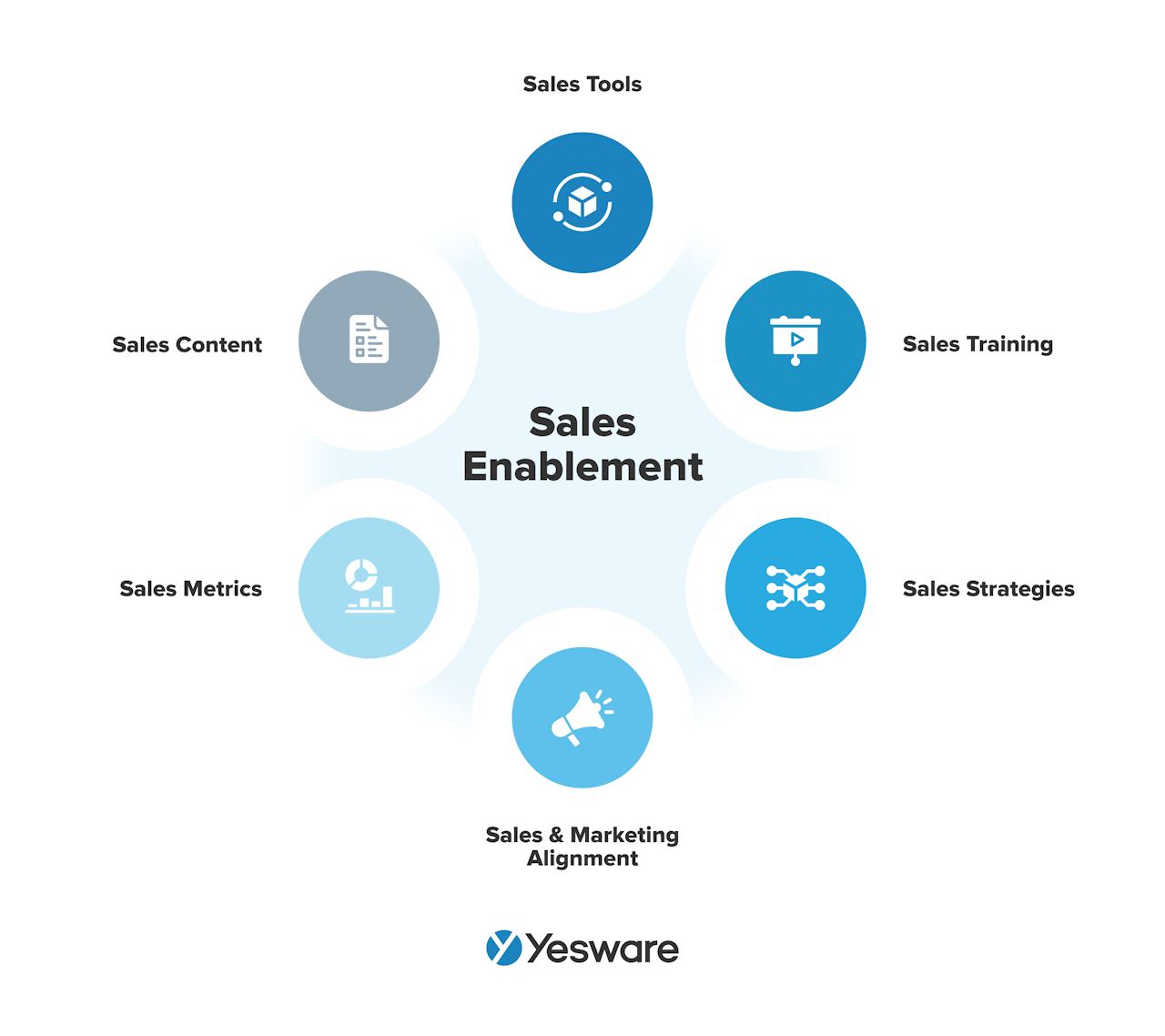 Sales enablement software can help teams achieve or improve all of the above, as well as:
Sales enablement software can help teams achieve or improve all of the above, as well as:
- Sales prospecting
- Call tracking
- Scheduling meetings and demos
- Video chatting
- Email outreach
- Chatbots and live chatting
- Sales reporting
- Project management
The primary goal of sales enablement is to provide salespeople with the tools, content, strategies, and other resources they need to increase their productivity, build stronger sales relationships, and close more deals.
Sales Prospecting
Prospecting is the most time-consuming and challenging part of the process, according to a study by LinkedIn.
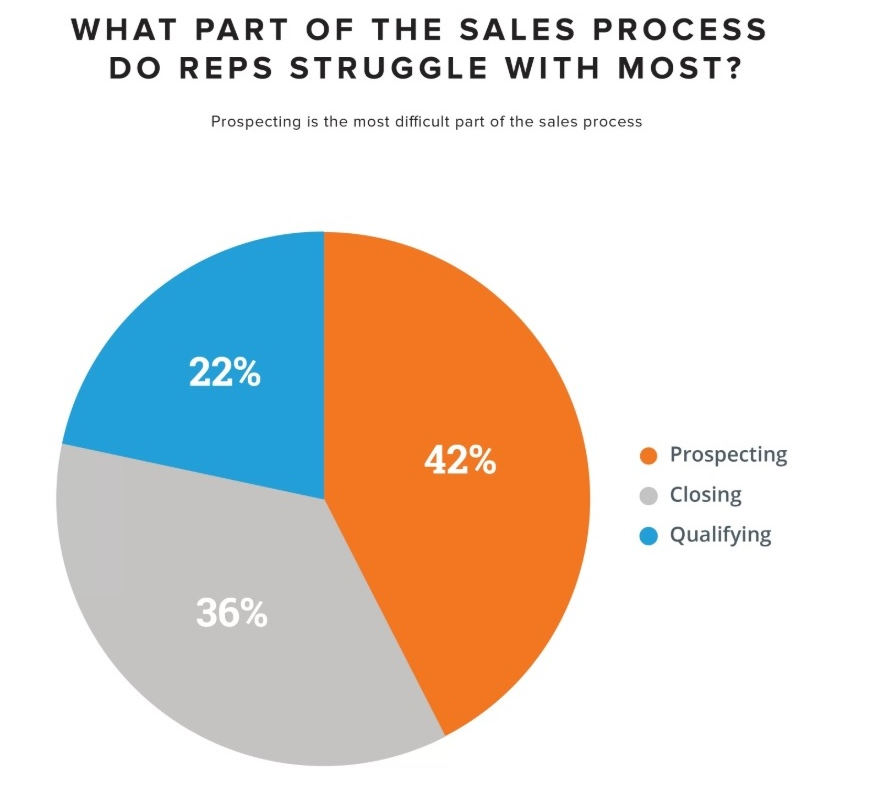
Fortunately, sales prospecting tools can alleviate many of the most difficult parts of finding and qualifying new leads. 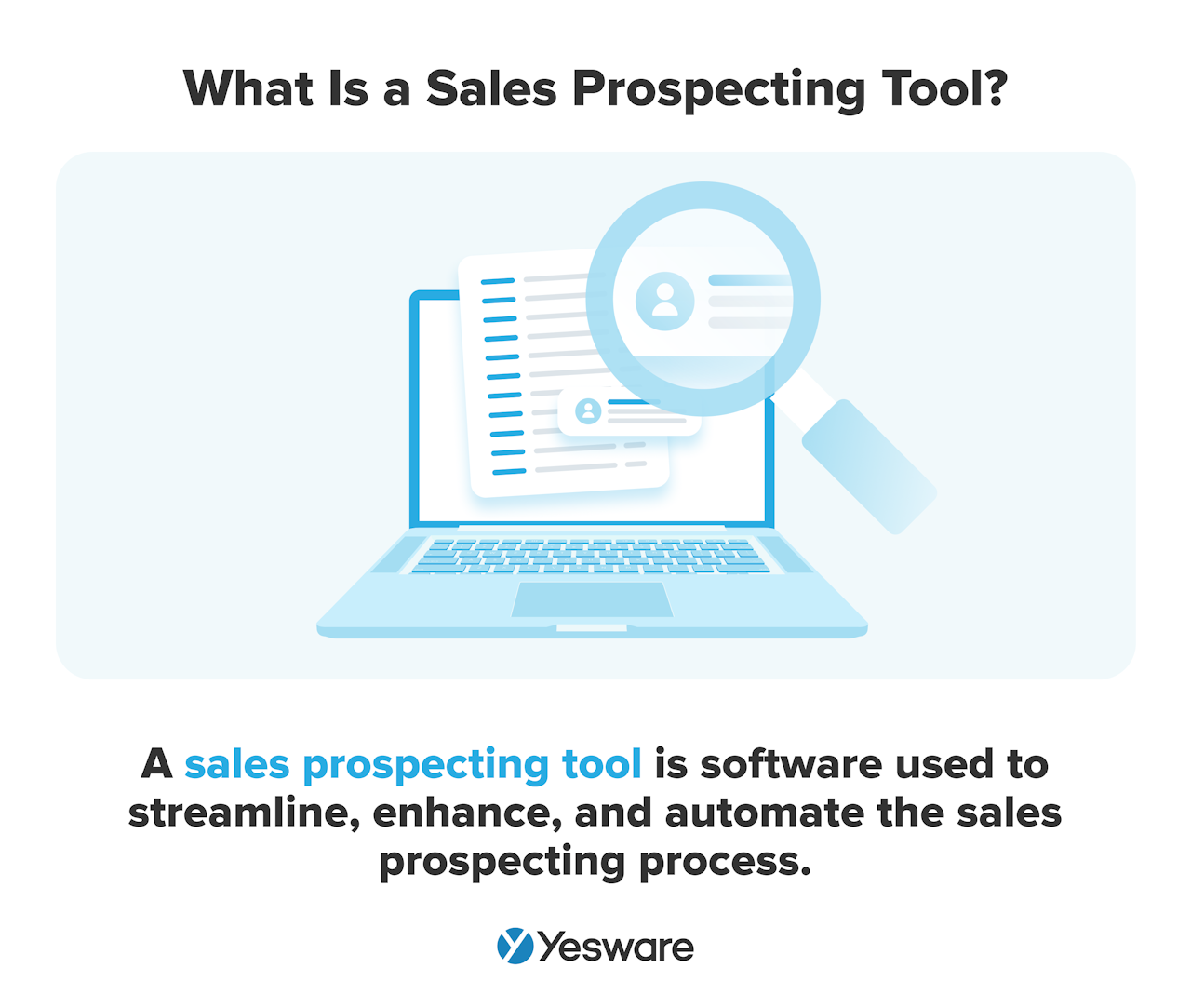 Using sales tech to support your lead generation and prospecting process can massively increase rep productivity, improve the quality of your sales data, and grow your pipeline.
Using sales tech to support your lead generation and prospecting process can massively increase rep productivity, improve the quality of your sales data, and grow your pipeline.
Prospecting software can help sales teams:
- Collect data about website visitors
- Crawl public and private websites to scrape for demographic, firmographic, and technographic data
- Gather intel from social media profiles
- Build a lead database
- Score leads based on your ICP
Many prospecting tools on the market today include AI features that have taken the process to yet another new level of sophistication and intuitiveness.
Sales Prospecting Tool Examples
Here are two of the top sales prospecting tools.
LinkedIn Sales Navigator
Sales Navigator is LinkedIn’s answer to lead generation. And, given that the professional social media platform has over over 1 billion users worldwide, it’s an absolute goldmine of B2B leads. Sales Navigator integrates well with many CRM systems and helps users connect directly with decision makers — making it easy to populate your pipeline with plenty of promising leads.
Yesware
Yesware provides salespeople with a suite of tools for prospecting – from finding leads, sending multi-channel campaigns, tracking prospect engagement, booking meetings through live automation links, and syncing all activity to Salesforce. The tool integrates right inside your Outlook or Gmail inbox, so all prospecting tools are just a click away.
Call Tracking/Analytics
Call tracking software records, transcribes, and analyzes incoming and outgoing sales calls.
This type category of sales enablement software helps teams dig deep into insights about sales calls, including analytics about data like:
- Call length
- Call frequency
- Call source
- Keyword patterns
These platforms also allow users to add internal comments to call logs, analyze trends and conversation signals, and see a prioritized list of prospects based on engagement level.
Call tracking and analytics can help sales reps improve their sales conversations and build better relationships with buyers.
Call Analytic Platform Examples
Here are two of the most popular call analytics platforms used in sales tech.
Gong
Gong is a revenue intelligence platform that records, transcribes, and analyzes all conversations via video calls, phone calls, and emails. The platform then delivers data-backed insights for improving strategies and outcomes.
CallRail
CallRail integrates with over 700 marketing and sales tools. It offers several pricing tiers, but even the most basic offers decent call tracking to get your team started. Other tiers include features like conversation intelligence and keyword analysis.
Email Outreach
Email marketing is one of the most widely used B2B sales and marketing strategies today, with over 80% of industry professionals reporting that they regularly rely on email outreach in the sale process.
It’s no surprise why, either — sales emails give reps the flexibility to reach prospects at scale, but with impressive levels of personalization.
And with studies showing that the ROI is $38 for every $1 spent on a sales email, every sales team should be adopting this strategy in their sales playbook (or leveling up their existing campaigns).
Fortunately, email outreach technology can help sales reps automate all of the most tedious, time-consuming, and error-prone tasks of sending emails at scale:
- Scheduling emails and automated follow-ups
- Storing and analyzing personalized email templates
- A/B test subject lines, body text, and CTAs
- Track open rates, click-through rates (CTR), and more
- Analyze data and provide detailed reports
Email Outreach Platform Examples
Here are two of the most popular email outreach platforms.
Yesware
With Yesware, users can create multi-channel campaigns that send themselves, and when recipients don’t respond, Yesware will automatically send follow-ups. Users can also create ready-to-use email templates, measure the success of their templates and campaigns, and receive daily reports that help the whole team improve.
Interested in trying? Download Yesware for free today.
Mailchimp
Mailchimp is designed for marketing professionals who want to send personalized emails at scale. The tool provides users with reports on engagement and recommendations for increasing opens and clicks.
Scheduling Software
Many sales tech platforms give users the ability to schedule meetings and calls directly from their inbox.
This means that when sales reps send emails to prospects requesting meetings, they no longer have to send multiple emails back and forth to find a mutually agreeable time.
Instead, the software automatically links the recipient to your calendar, and schedules an appointment directly from within your sent message. It also sends a confirmation email to both parties according to your preferences.
While it may not seem like the flashiest feature compared to some of the other sales tech featured in this list, a meeting scheduler reduces a lot of friction in the sales process and helps sales teams stay synced up and productive.
Scheduling Software Examples
Here are two popular meeting scheduling tools used in sales tech.
Doodle
Doodle specializes in scheduling for various needs, from sales meetings to events to appointments. The tool is great for groups because it allows you to send group polls where multiple people can select their preferred time, finding a meeting time that works best for everyone.
Meeting Scheduler
Yesware’s Meeting Scheduler tool allows users to send live, customizable links to prospects that sync to their calendars, giving prospects only available time slots to choose from. Once booked, the meetings automatically sync to both calendars for a smooth and effortless booking process.
Video Chat
The pandemic made video chatting a non-negotiable in every workplace.
Fortunately, that worked out generally great for salespeople, as video chats can provide much more personalized and productive sales interactions for both buyer and seller.
Video chatting software gives sales reps several unique capabilities, such as:
- Screen sharing
- Recording meetings
- Co-browsing
- Link-sharing during meetings
Look for video conferencing platforms that allow you to easily shift between email, video conferencing, text chatting, and voice calling. You should also, of course, prioritize a high-quality video experience, as well as a secure and seamless connection.
Video Chat Platform Examples
Here are two of the most popular video chat platforms.
Zoom
Zoom is one of the most well-known video chat platforms out there, allowing professionals to easily conduct meetings with live messaging and content sharing.
Google Meet
Google Meet is another one of the most popular video chat platforms used today for virtual meetings with live messaging and presentation sharing.
Live Chat
A live chat box is a common feature on many websites, especially for markets in which website visitors expect (or respond well to) an immediate, live response.
Many sales and marketing teams are also opting to add live chat features to reach the subset of their market who would rather do anything than pick up the phone. The live chat box gives those buyers access to real-time sales support without sacrificing their preferences. This is a great way to add personalization to the buying process.
In fact, live chat is becoming increasingly popular among many buyer subsets (not just the introverted ones) — and also generating increasingly positive results for sales teams.
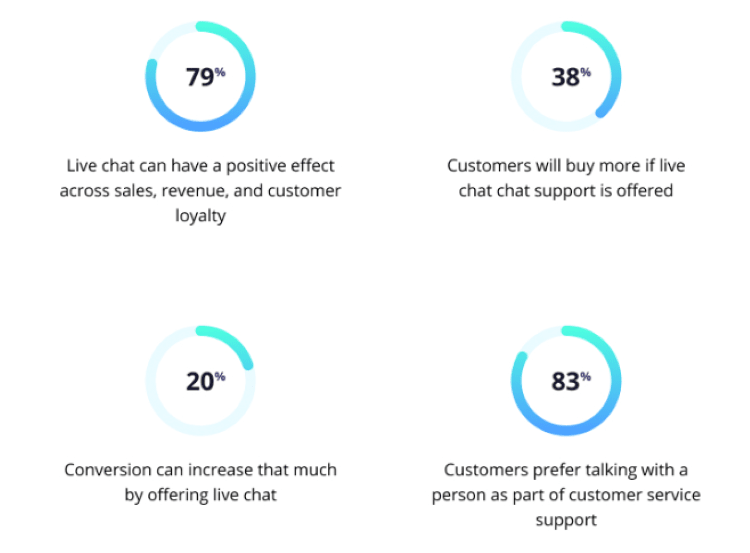
Live chat tools can help sales and marketing teams answer frequently asked questions, encourage prospects to visit a high-converting landing page, provide customer service, direct users toward more appropriate support when necessary, and even close sales and process payment.
Some platforms also give users the ability to collect all chat logs, email conversations, and social media interactions in a universal inbox so everyone can see the status of correspondence. This is especially helpful for customer support teams in which multiple agents work on the same ticket.
Live Chat Platform Examples
Here are two of the most used live chat platforms.
LiveChat
LiveChat is a customer service platform that allows businesses to engage with website visitors or social media visitors. Users are able to qualify leads in real-time with custom forms and AI automation.
Zendesk Support Suite
Chances are you’ve come across a Zendesk live chat box at some point in your web-browsing history. Zendesk has over 100,000 users (and growing every day) and is designed to help you meet the highly personalized needs of each of your web visitors with the power of AI.
Sales Reporting
Reliable sales reporting and effective analytics are crucial for successful sales.
Accurate reporting helps teams make data-driven decisions about budgeting, resource allocation, sales strategies, campaigns, and more. 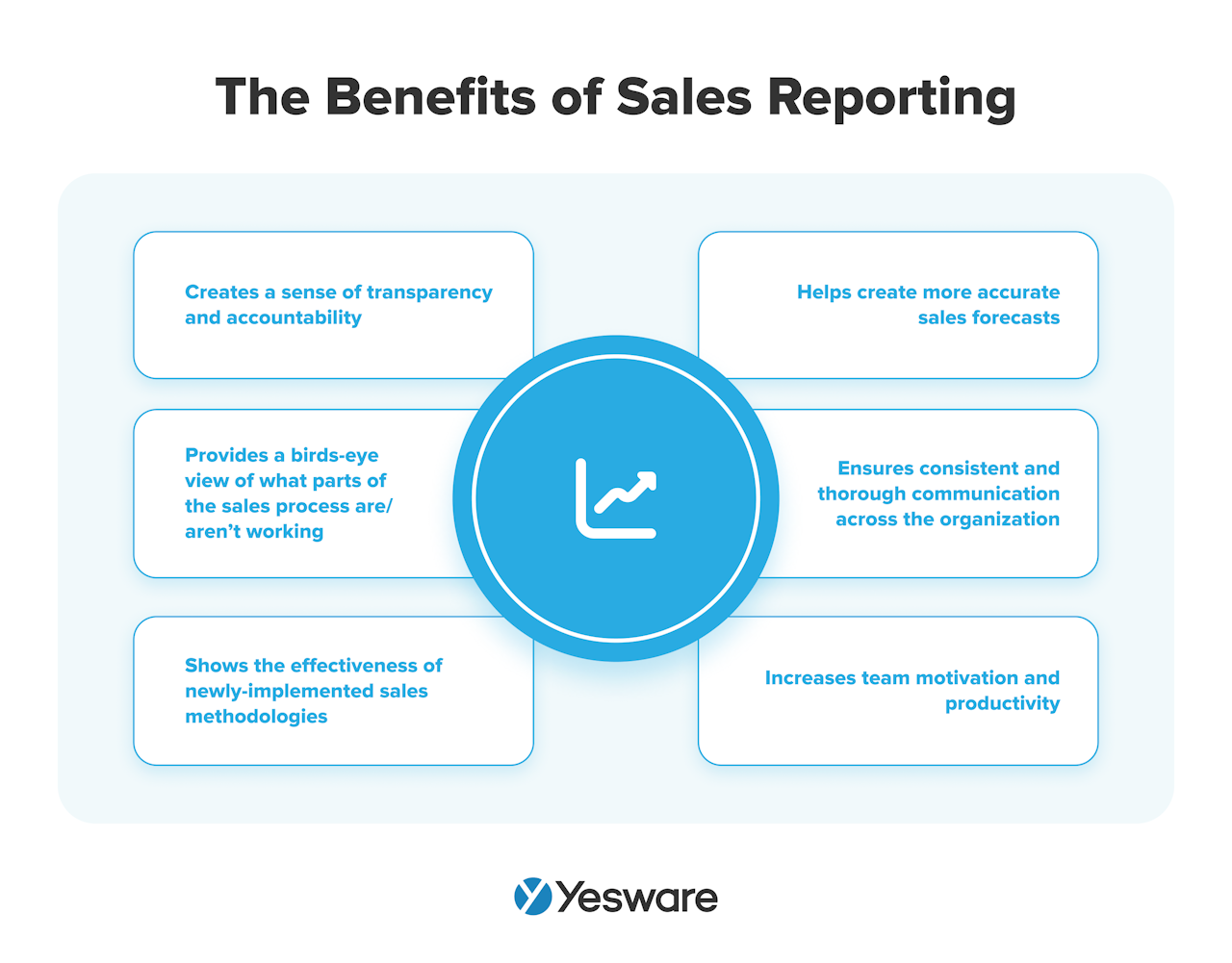 There’s no limit to the types of reporting that this category of sales tech can offer:
There’s no limit to the types of reporting that this category of sales tech can offer:
- Predictive analytics
- Pipeline management reports
- Sales forecasts and weighted sales forecasts
- Conversion intelligence
- Account-based reports
- Price optimization
- Response time
- Cost per lead
- Revenue reports
- Deal velocity
- Customer acquisition cost
- Number of calls/emails
- Upsell/cross-sell rate
- Deal value
- ROI reports for investors and stakeholders
Analysis and reporting sales tech can gather, organize, analyze, and present sales data in a visually appealing way that helps sales teams draw insights.
Look for a platform that allows you to customize which data it collects, which KPIs it reports on, how it presents reports, and any other factors that are important for you to analyze.
When it comes to examples for this category, it’s hard to choose just two. The right one for your team will truly depend on which types of reports and analytics are most important to your team.
Sales Reporting Tools
Here are two highly effective sales reporting tools for your sales tech stack.
Zoho Analytics
Zoho Analytics is a self-service business intelligence platform that allows users to create reporting dashboards with high-tech data visualizations so that teams can analyze data and identify trends.
Yesware Reporting
As a part of Yesware’s suite of tools, Reporting & Analytics is another feature that lives directly inside users’ Gmail or Outlook inboxes. Yesware’s Reporting provides users with daily activity reports, engagement data, and outcomes so teams can continuously improve.
Project Management Tools
For teams that are ready to level up in their task and project management, sales tech can help.
Project management software can help sales and marketing teams plan, assign and keep track of tasks, set deadlines, collaborate on shared timelines, and more.
In other words, project management software helps teams collaborate efficiently by organizing all of their tasks, projects, communication, and progress in one shared location.
These platforms also help sales reps better understand their own productivity and give sales managers insight into project velocity.
That being said, those are just the obvious use cases for project management software. Many sales teams also innovatively use project management tools for other tasks, such as:
- Territory and quota management
- Incentives and commissions
- Onboarding and training
- Sales coaching
- Sales gamification
As you might have guessed, HubSpot offers a feature for project management called HubSpot Projects. Asana is another popular platform that meets the needs of many teams.
Project Management Tool Examples
Here are two common project management tools.
Asana
Asana allows users to set company-wide goals, connect teams, set plans, manage processes, and track work in a single platform.
Monday.com
Monday.com is a customizable work management platform that allows users to centralize work, tasks, processes, tools, and files into one single platform.
Tip: For more information about building the ideal tech stack for your team, download our guide:
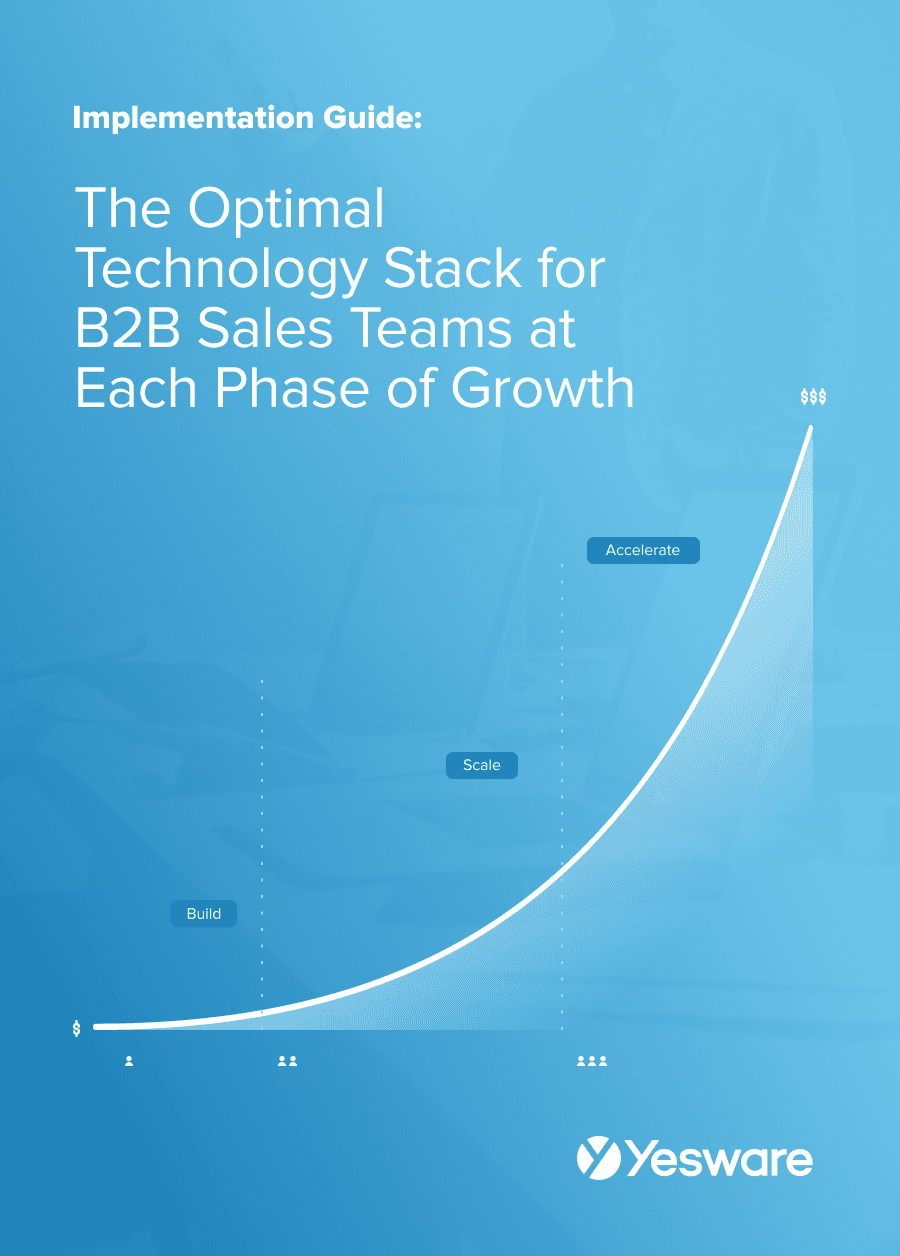 The Optimal Technology Stack for B2B Sales TeamsUsing data from the most successful business-scaling models, we designed a blueprint for the exact technology your business needs at each phase of growth.
The Optimal Technology Stack for B2B Sales TeamsUsing data from the most successful business-scaling models, we designed a blueprint for the exact technology your business needs at each phase of growth.
Conclusion
Believe it or not, this article is barely the tip of the iceberg when it comes to sales tech. This is truly no limit to the number of ways that sales technology can improve the process and experience for buyers, sales reps, and sales managers.
Building an optimized tech stack takes time and will also likely require some trial and error. Remember to consider ease of integration and implementation when you shop for new platforms.
Try Yesware for free today to personalize and automate your email outreach.
Get sales tips and strategies delivered straight to your inbox.
Yesware will help you generate more sales right from your inbox. Try our Outlook add-on or Gmail Chrome extension for free, forever!
Related Articles
Anya Vitko
Casey O'Connor
Casey O'Connor
Sales, deal management, and communication tips for your inbox

